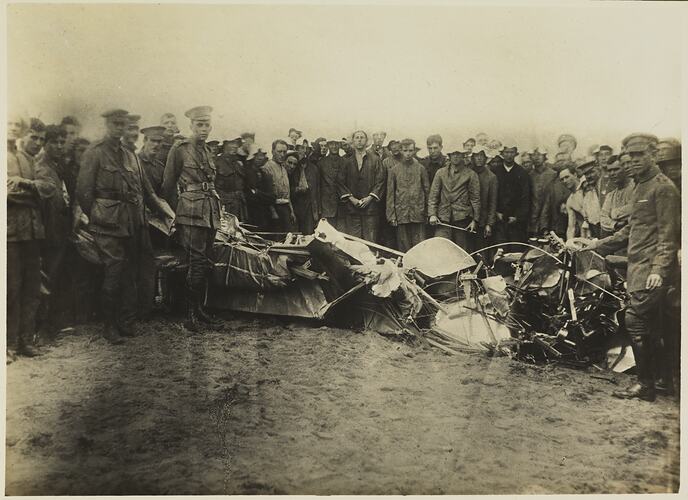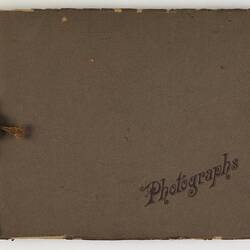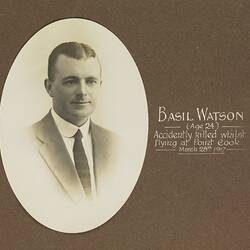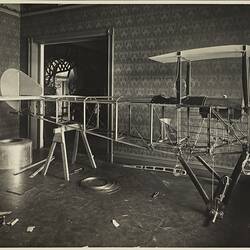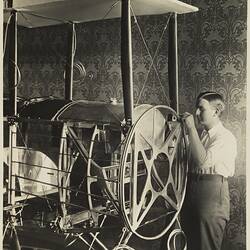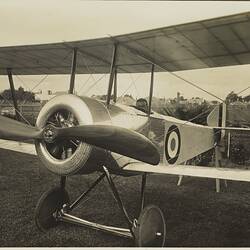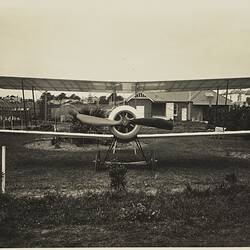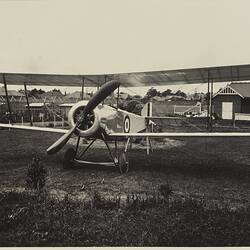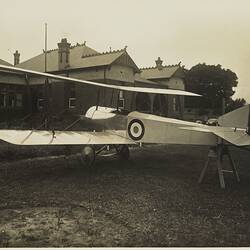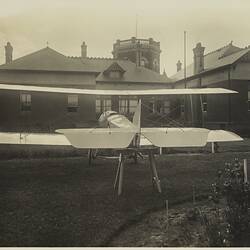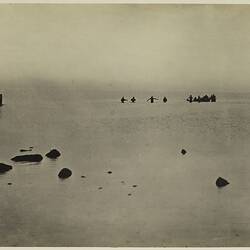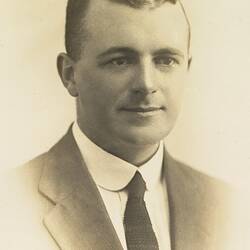Summary
Part of a commemorative photograph album produced by Sears' Studios, Melbourne, documenting the work of Basil Watson in constructing a biplane at his family's home 'Foilacleugh' in Elsternwick, Victoria, during 1916, and the aftermath of his fatal crash off Point Cook on 28th March 1917. The biplane was based on the design of the Sopwith Pup, which Watson was familiar with from his time working as an engineer and test pilot with the Sopwith Aviation Co. and Imperial Army in Britain, during 1914-1916. Watson piloted the plane on pioneering flights to Bendigo and western Victoria. He performed many public acrobatic flying demonstrations and flew the first official airmail between Mt Gambier and Melbourne in February 1917. He was killed when a component of his aircraft failed during an aerobatic demonstration over Point Cook, Victoria, on 28th March 1917, causing the wings to collapse, plunging the aircraft into Port Phillip Bay. His death was the earliest recorded aviation fatality in Australia. His death deeply affected the Watson family, who continued to publish tribute notices in Melbourne's daily newspapers on each anniversary for over a decade.
Description of Content
A crowd of witnesses, including officers from the AFC Central Flying School and men from the adjacent AIF army camp, inspecting the wreckage of Basil Watson's biplane recovered and brought ashore following his fatal crash into the shallow foreshore waters of Port Phillip Bay, off Point Cook. Newspaper reports described the crash as occuring about 'about 40 yards from the shore-end of the military enclosure', after the wings of Watson's plane collapsed as he banked at 2,000 ft to turn out of a steep nose dive he was performing as part of an aerobatic display for soldiers at the military camp. The pilot was reported to have died almost instantly as the first witnesses reach the crash site.
Physical Description
Horizontal landscape format rectangular gelatin silver emulsion photographic print, glued to a rectangular landscape format brown cardridge paper page, without caption.
More Information
-
Collection Names
-
Collecting Areas
Transport, Images & Image Making, Public Life & Institutions
-
Creator
Sears Studio, Melbourne, Greater Melbourne, Victoria, Australia, 1917
It is not clear whether Sears took all of the original negatives but they appear to have at least printed the photographs in a standard format and mounted them in the commemorative album. The original photograph was possibly taken by Mr A. Darge, a Melbourne professional photogrpaher, who was reported in the press to have been an eye-witness to the crash. -
Place & Date Depicted
-
Format
Photograph, 8" x 6", Black & White
-
Classification
-
Category
-
Discipline
-
Type of item
-
Image Dimensions - Photograph
202 mm (Width), 148 mm (Height)
Landscape format. Dimensions including 3 mm white border.
-
References
'AVIATION TRAGEDY - MR BASIL WATSON KILLED', The Argus (Melbourne), 29 Mar 1917, p.6, [Link 1] 'AUSTRALIA'S TOLL OF THE AIR', Sunday Times (Perth, 11 June 1922, p.2, [Link 2]
-
Keywords
Accidents, Aviation, Aviation Pioneers, Biplanes, Disasters, Wreckage
